PCU attends The Conversation - Africa writing workshop at South African Astronomical Observatory
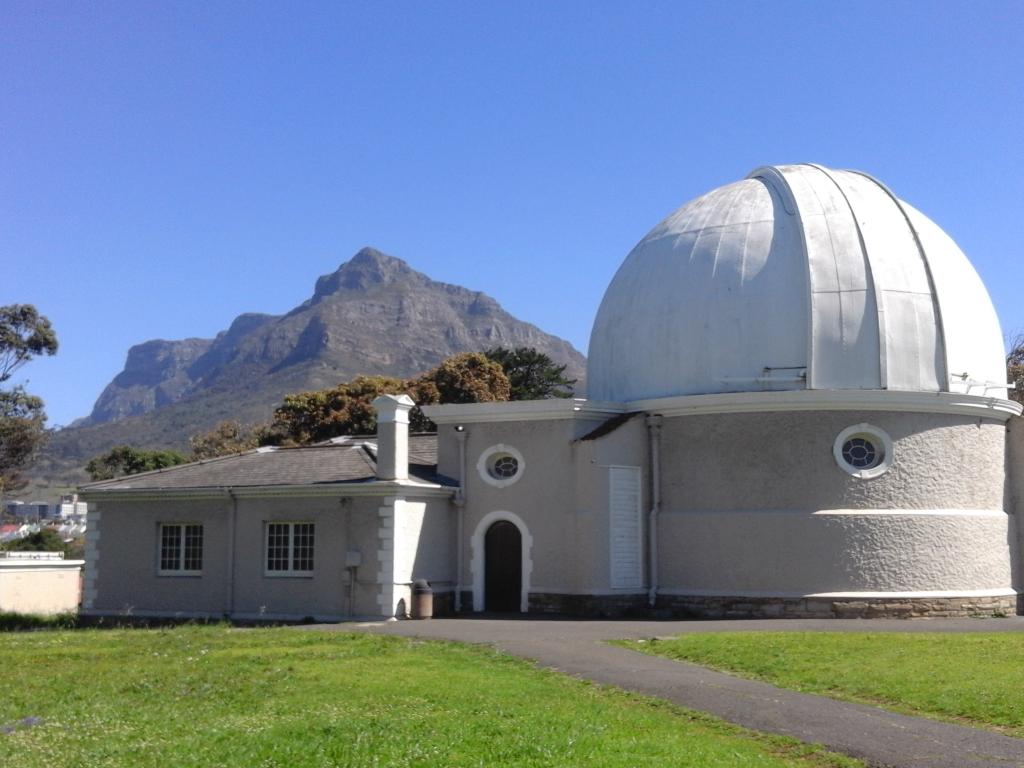
On Monday 10 September 2018, the South African Astronomical Observatory (SAAO) hosted an introductory writing workshop facilitated by The Conversation - Africa in Cape Town. Editors, Natasha Joseph (Science and Technology), and Ozayr Patel (Environment and Energy) of The Conversation facilitated the event. The workshop was centred on learning to write and improve one’s skills in communicating science for non-academic audiences. The discussion and workshop activities were focussed on learning in how to ‘pitch’ an article by exploring writing about 1) the significance of one’s scientific findings in an interesting and ‘non-specialist’ way, 2) timelessness i.e. does the content bear significance to the present time or is it timeless?, and lastly 3) ‘why does the content matter’ to society in general?
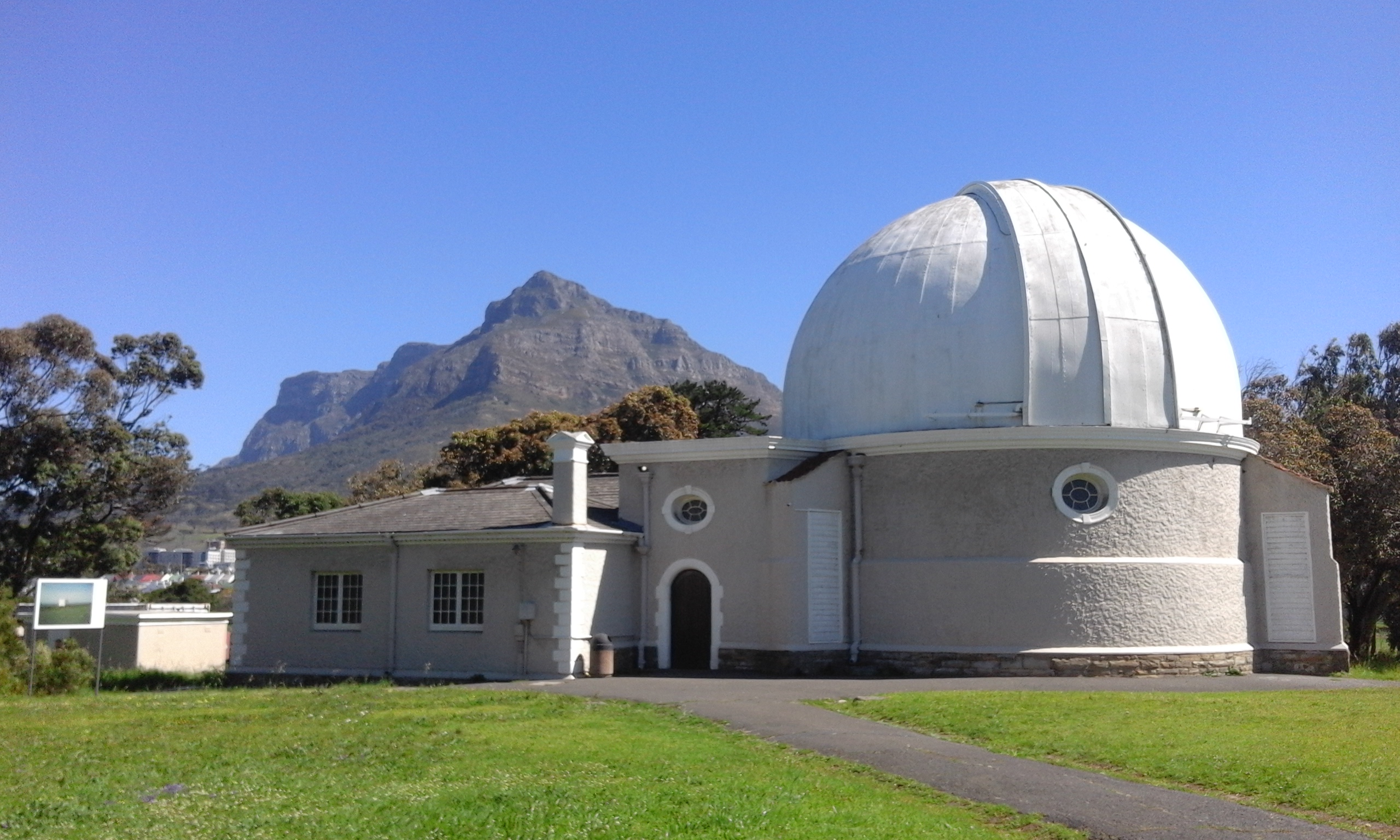
The South African Astronomical Observatory McClean Telescope built in 1897
The Conversation is a non-profit agency that offers an independent source that publishes online articles written by academics and the research community, and edited by journalists for the general public. Their aim is to promote a better understanding of science and current affairs in an accessible language to the widest possible audience. The Conversation has published articles throughout the world from over 2,000 authors with approximately 3,514 articles to date, and has a wide readership of 1.8 million. Therefore, this platform provides researchers with the wonderful opportunity to showcase their research, and to share to their knowledge on, not only the African Continent, but also globally. These days people ‘literally’ count because of technology that tracks readership trends! The Conversation reaches not only online reading audiences, but has a high impact on society through radio (80%), television (25%), conferences (15%) and through policy engagements (13%). If one writes an article for The Conversation it is an interactive experience whereby the Editors guide the researcher through writing by asking questions, and therefore facilitate the science communication process as the Editors describe themselves as the ‘non-specialist audience’.
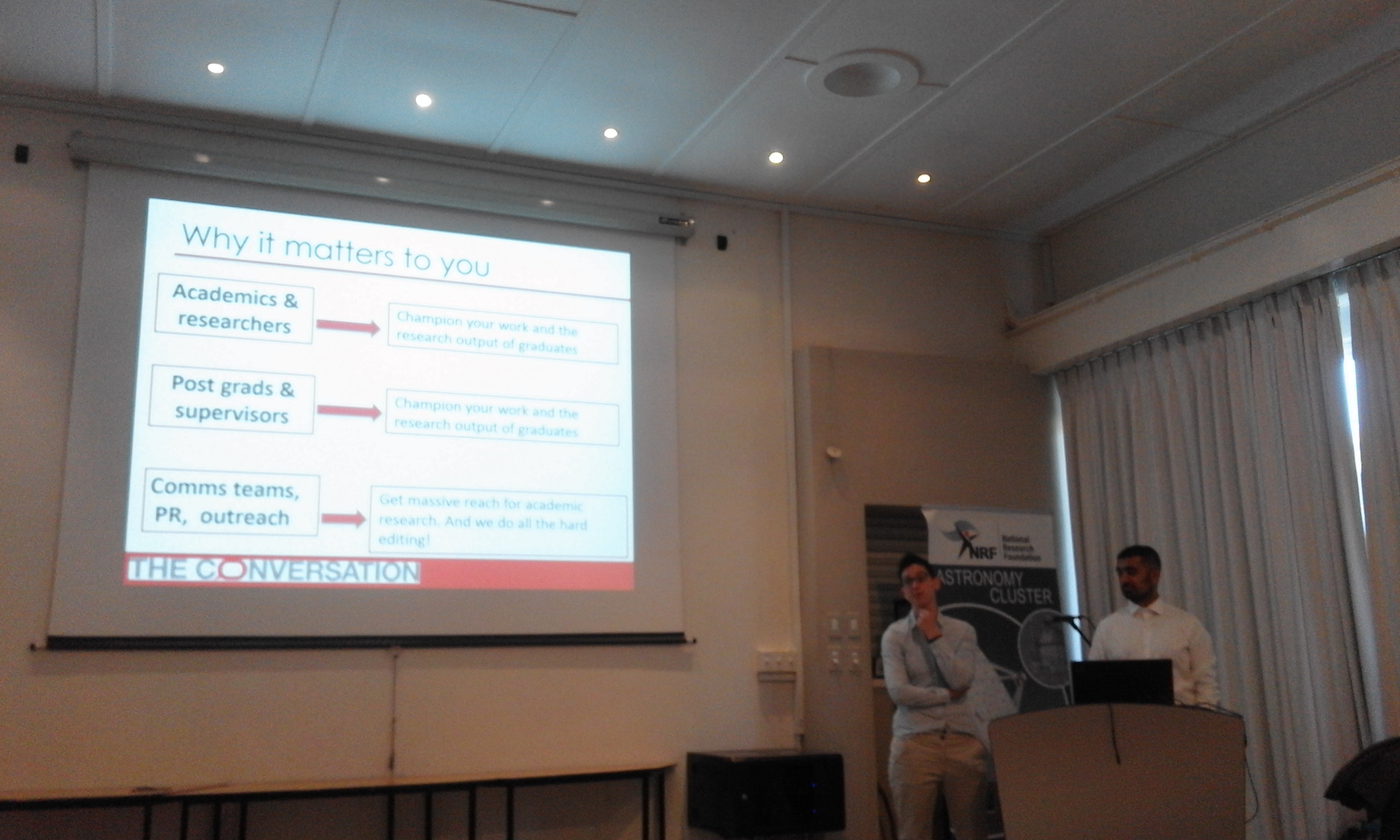

The Conversation - Africa team (left) and a few of the attendees (right)
Glynis Humphrey, a Ph.D. candidate at the Plant Conservation Unit attended the event, and thanks The Conversation Editors, Natasha Joseph and Ozayr Patel, and Daniel Cunnama, the Science Engagement Astronomer based at SAAO for extending the invitation and hosting the workshop. The staff at the SAAO often humour at the fact that they work in Observatory at the ‘Observatory’, and apparently not many Capetonians know that this is the reason for the suburbs name. Glynis was surprised upon arriving at the event to spot a group of birders heading off into the SAAO grounds. Geographically it is situated at the confluence of the Liesbeek and Black Rivers within the Two Rivers Urban Park, a wetland area, and is therefore home to rich bird and animal life. The grounds are also the only remaining habitat of the rare iris Moraea aristata, a flowering bulb, and the area forms the northern limit of the endangered Western Leopard Toad (Amietophrynus pantherinus). Further, the SAAO stands as a relic site of scientific astronomic history with buildings dating back to the 1820s which makes it one of the oldest structures in the heart of Cape Town!
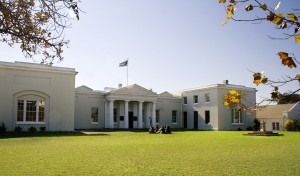
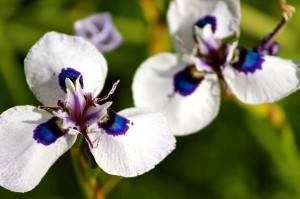
The South African Astronomical Observatory main building (left) and Moraea aristata, a rare iris growing on the grounds (right)
~ Article & images supplied by Glynis Humphrey
